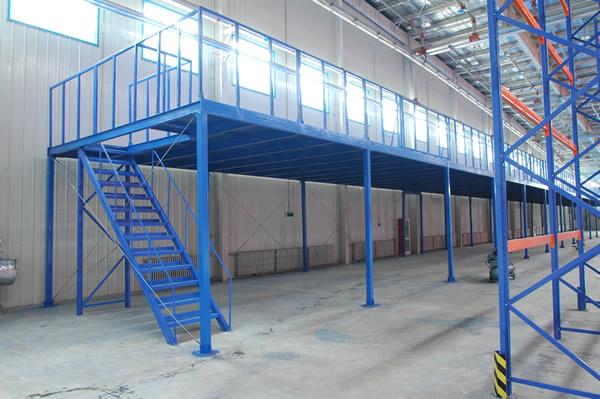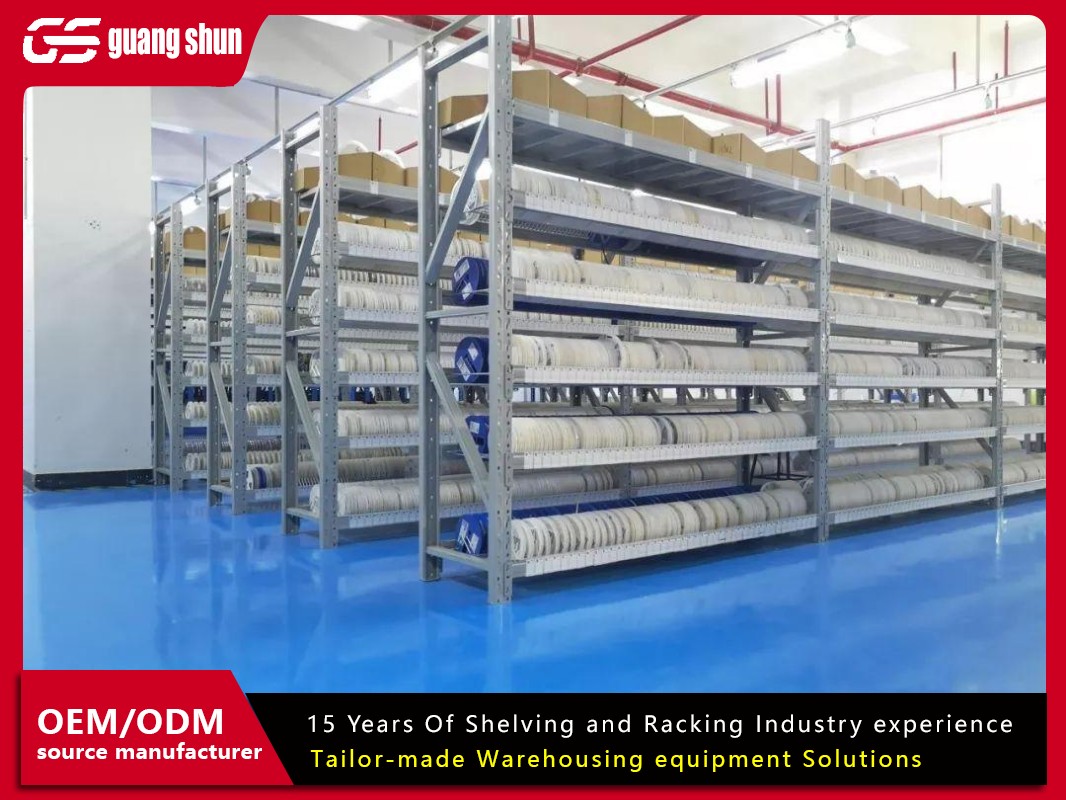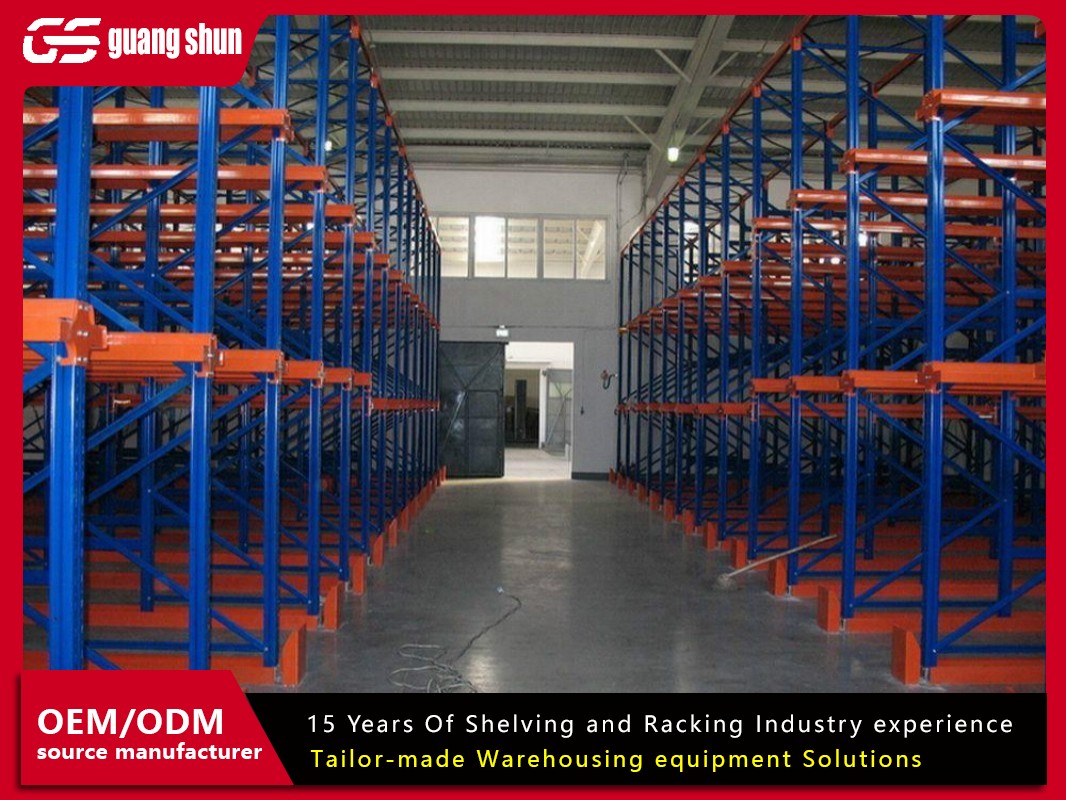In the high-stakes world of logistics and fulfillment, maximizing every cubic foot of space is paramount. At the heart of an efficient, safe, and productive warehouse operation lies a critical component: the warehouse racking system. Far more than just metal shelves, a well-designed warehouse racking system is the backbone that supports inventory management, optimizes workflow, enhances safety, and directly impacts the bottom line. This comprehensive guide delves deep into the world of warehouse racking systems, exploring their fundamental purpose, the diverse types available, their significant benefits, crucial selection factors, and essential considerations for maintenance and safety.

Understanding the Warehouse Racking System: More Than Just Shelving
A warehouse racking system is an engineered structure specifically designed to store palletized goods or individual items in an organized, accessible, and space-efficient manner within a warehouse or distribution center. Unlike simple shelving, modern warehouse racking systems are sophisticated structures built to withstand immense loads, often integrating seamlessly with material handling equipment like forklifts, pallet jacks, and automated storage and retrieval systems (AS/RS).
The primary function of any warehouse racking system is to:
•Maximize Vertical Space: Utilize the often-underused height of a warehouse building, dramatically increasing storage capacity without expanding the building footprint.
•Organize Inventory: Provide designated, identifiable locations for every SKU, facilitating accurate inventory control and faster order picking.
•Ensure Accessibility: Allow for efficient loading and unloading of goods, minimizing travel time for workers and equipment.
•Protect Inventory: Safely support products off the floor, reducing damage from moisture, pests, or mishandling.
•Support Workflow: Structure the warehouse layout to streamline receiving, put-away, storage, picking, packing, and shipping processes.
Investing in the right warehouse racking system is not an expense; it's a strategic investment in operational efficiency and scalability.
Exploring the Diverse Landscape: Key Types of Warehouse Racking Systems
No single warehouse racking system fits all needs. The optimal choice depends heavily on the nature of the inventory, turnover rates, budget, building characteristics, and handling equipment. Here are the most common and impactful types:
1.Selective Pallet Racking: The undisputed workhorse of warehouses. This versatile warehouse racking system offers direct access to every single pallet location via aisles. Pallets are typically stored on horizontal load beams adjustable in height increments. Its flexibility makes it suitable for a vast array of SKUs with varying turnover rates. While it offers excellent accessibility, it requires wider aisles for forklift maneuvering compared to some denser systems.
2.Drive-In/Drive-Thru Racking: Engineered for high-density storage of homogeneous products with lower SKU counts but high volume. In this warehouse racking system, forklifts drive directly into the rack structure to place or retrieve pallets, which are stored on rails multiple pallets deep. Drive-In (last-in, first-out - LIFO) has an entrance on one side only, while Drive-Thru (first-in, first-out - FIFO) has entrances on both ends. This system sacrifices some selectivity for significant space savings.
3.Push-Back Racking: An excellent compromise between selectivity and density. Pallet loads are stored on nested carts that ride on inclined rails. When a new pallet is loaded, it pushes the previous pallets back. Retrieval works in reverse – removing the front pallet allows the next one to roll forward. This warehouse racking system operates on a LIFO basis and offers good density (typically 2-6 pallets deep) while maintaining reasonable accessibility from a single aisle.
4.Pallet Flow Racking: Designed for high-throughput, high-density FIFO inventory management. Pallets are loaded onto an inclined track at the higher end and flow by gravity on rollers or wheels towards the picking face at the lower end. This dynamic warehouse racking system is ideal for perishable goods, items with expiration dates, or fast-moving products where stock rotation is critical. It minimizes handling time per pallet.
5.Cantilever Racking: The specialist for long, bulky, or irregularly shaped items unsuitable for pallet racking. This warehouse racking system features vertical columns with horizontal arms extending outwards. It's perfect for storing lumber, pipes, furniture, rolls of carpet, or large appliances. Arms can be adjusted or removed to accommodate various load lengths and weights.
6.Mobile Pallet Racking (Mobile Aisle): Maximizes storage density by eliminating most fixed aisles. Entire sections of racking are mounted on electrically powered mobile bases that move laterally on floor rails. Only one working aisle is created at a time where needed. This high-density warehouse racking system is ideal for cold storage, archives, or facilities with very expensive real estate, significantly increasing storage capacity (potentially doubling it).
7.Mezzanine Systems: While not strictly a racking type, mezzanines integrate seamlessly with racking to create additional operational levels within the warehouse cube. They effectively double or triple usable floor space for offices, packing stations, or additional storage, working in conjunction with the primary warehouse racking system below or around them.

The Tangible Advantages: Why Invest in a Robust Warehouse Racking System?
Implementing an optimized warehouse racking system delivers a cascade of benefits that resonate across the entire operation:
1.Dramatic Space Optimization & Increased Capacity: This is the most immediate and compelling advantage. By leveraging vertical space efficiently, a warehouse racking system can often double or triple the storage capacity of a facility compared to floor stacking. Systems like Drive-In or Mobile Racking push this density even further.
2.Enhanced Operational Efficiency & Productivity: Organized storage means workers spend less time searching for items. Faster put-away and picking cycles are achieved through logical product placement and optimized warehouse layout facilitated by the racking structure. Integration with WMS and proper labeling further boosts efficiency.
3.Improved Inventory Management & Accuracy: A structured warehouse racking system provides designated locations for every SKU, making cycle counting and full physical inventories significantly easier and more accurate. Reduced misplacement and easier stock rotation (especially with FIFO systems) lead to better inventory control.
4.Enhanced Safety for Personnel and Inventory: Properly installed and maintained racking keeps heavy loads securely off the floor and organized, minimizing the risk of falling objects, trips, and falls. Dedicated aisles prevent congestion and collisions. Systems designed for the specific load weights ensure structural integrity. Protecting inventory from damage also reduces losses.
5.Scalability and Flexibility: Many modern warehouse racking systems, particularly selective racking, are designed with adjustability in mind. Beam heights can be reconfigured as inventory profiles or handling equipment change. Systems can often be expanded or reconfigured relatively easily to accommodate business growth.
6.Cost Savings: While an initial investment, the long-term savings are substantial. Reduced need for larger premises (or delaying expansion), lower labor costs per unit handled, minimized product damage, and optimized inventory carrying costs all contribute to a strong ROI for a quality warehouse racking system.
Choosing Wisely: Key Factors in Selecting Your Warehouse Racking System
Selecting the optimal warehouse racking system is a complex decision requiring careful analysis. Consider these critical factors:
1.Inventory Profile:SKU Count & Variety: High SKU count often favors selective racking. Low SKU/high volume leans towards dense systems (Drive-In, Push-Back, Flow).Pallet Size & Weight: Dimensions and weight per pallet dictate beam lengths, frame capacities, and decking requirements. Know your maximum load dimensions and weights.Turnover Rate (FIFO vs. LIFO): Fast-moving items suit selective or pallet flow (FIFO). Slower movers can utilize dense LIFO systems like Drive-In or Push-Back.Product Characteristics: Fragile items, perishables, or hazardous materials may have specific storage requirements influencing rack choice and accessories.
2.Building Constraints:Clear Ceiling Height: This is crucial for determining maximum vertical storage potential.Floor Conditions & Load Capacity: Floor flatness and strength must support the concentrated loads of the rack system and handling equipment.Column Locations & Obstructions: Existing building columns, doors, sprinklers, and HVAC can impact rack layout and aisle placement.
3.Material Handling Equipment (MHE):Type of Equipment: The forklift's turning radius (especially for narrow aisle or VNA trucks), lift height, and fork length directly determine required aisle widths and overall rack configuration. The warehouse racking system and MHE must be perfectly matched.Reach Capabilities: Define if you use stand-up counterbalance, sit-down, reach trucks, or turret trucks, as each has different space requirements.
4.Budget & ROI:Initial Investment: Costs vary significantly between system types (e.g., selective vs. mobile racking). Include costs for the rack structure, installation, and necessary accessories (decking, column protectors, safety guards).Operational Costs: Consider the impact on labor efficiency, energy usage (especially in cold storage with dense systems), and potential maintenance.Long-Term Value: Factor in scalability, durability, and the expected lifespan of the system. A cheaper system that doesn't meet needs is ultimately more expensive.
5.Future Growth & Flexibility: Choose a warehouse racking system that can adapt. Can it be easily reconfigured or expanded? Does it allow for changes in product mix or handling technology?
Ensuring Longevity and Safety: Maintenance and Best Practices for Your Warehouse Racking System
A warehouse racking system is a significant investment, and its structural integrity is vital for safety and operational continuity. Proactive maintenance is non-negotiable:
1.Regular Inspections:Daily/Operator Level: Train forklift operators and warehouse staff to report any visible damage (dents, bends, impacts) immediately.Weekly/Monthly Visual Checks: Supervisors or safety personnel should conduct systematic visual inspections of the entire warehouse racking system, focusing on high-traffic areas and potential impact zones.Annual Professional Inspections: Engage a qualified racking inspector (often the supplier or a specialist company) to perform a thorough, documented assessment per industry standards (e.g., SEMA, RMI). This identifies hidden damage or wear.
2.Immediate Damage Protocol: Implement a clear "Red Tag" or quarantine system. Any damaged component (upright, beam, brace, connector) must be immediately unloaded, the area cordoned off, and the component repaired or replaced by qualified personnel before being put back into service. Never overload racks to compensate for damaged capacity.
3.Load Management: Strictly adhere to the rated load capacities specified by the manufacturer and displayed on load application/configuration drawings. Never exceed beam capacities or the overall frame capacity. Ensure loads are centered on pallets and pallets are centered on beams. Use proper decking where required.
4.Proper Installation & Modification: The initial installation and any subsequent reconfiguration must be performed by trained technicians following the manufacturer's specifications and engineering drawings. Never modify racks (e.g., drilling holes, welding) without consulting the manufacturer or a qualified structural engineer. Ensure the warehouse racking system is properly anchored to the floor.
5.Safety Accessories: Utilize essential safety components:Column Protectors (Guards): Installed at the base of uprights to absorb minor impacts from forklifts.Aisle End Guards: Protect rack ends at the entrance of aisles.Pallet Supports/Wire Decking: Prevent pallets or products from falling through beams.Row Spacers & Cross Aisles: Maintain proper alignment and provide necessary access/safety paths.Clear Signage: Display load capacities, system configuration details, and safety warnings.
The Future of Warehouse Racking Systems: Trends to Watch
The evolution of the warehouse racking system continues, driven by automation, e-commerce demands, and sustainability:
1.Integration with Automation: Racking is increasingly designed as the physical framework for AS/RS (Automated Storage and Retrieval Systems), shuttle systems, and goods-to-person technologies. Precision and compatibility are paramount. The warehouse racking system becomes an integral part of the automation infrastructure.
2.Denser & Smarter Solutions: Demand for maximizing cube utilization fuels innovation in ultra-high-density systems and dynamic storage solutions that push the boundaries of space efficiency within the warehouse racking system.
3.Data-Driven Optimization: Warehouse Management Systems (WMS) and inventory data are used more intelligently to determine optimal slotting within the racking layout, minimizing travel time and maximizing picking efficiency.
4.Focus on Sustainability: Manufacturers are increasingly using recycled steel and exploring more sustainable production processes. Denser racking also contributes to sustainability by reducing the need for larger warehouse buildings.
5.Modularity & Adaptability: The need for speed and flexibility in response to market changes drives demand for easily reconfigurable warehouse racking systems that can adapt to new product lines or processes quickly.
A warehouse racking system is far more than just metal storage; it's a strategic asset that defines the efficiency, safety, and scalability of your entire warehouse operation. From the versatile selective rack to the ultra-dense mobile systems, choosing the right solution requires a deep understanding of your inventory, operations, building, and equipment. By carefully considering the types, benefits, and selection criteria, and committing to rigorous maintenance and safety protocols, businesses can unlock significant gains in capacity, productivity, and cost control. As warehousing evolves with automation and changing demands, the warehouse racking system will remain the fundamental framework upon which successful logistics operations are built. Investing wisely in this critical infrastructure is an investment in the future competitiveness and success of your supply chain.







